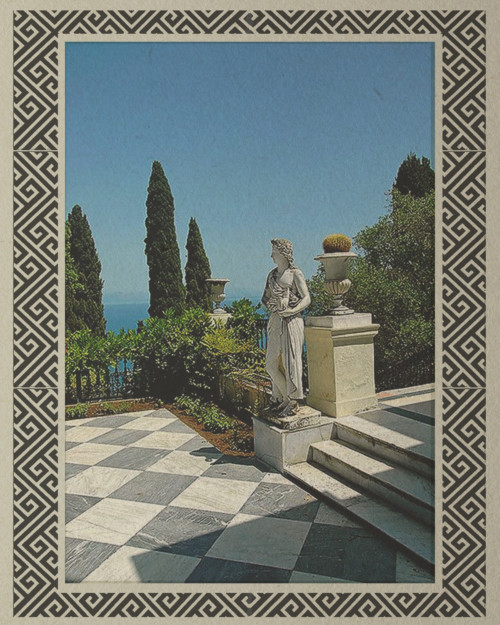
6 Essential Greek Myths About Plants
Like many kids, I was obsessed with Greek mythology as a child. I treasured my copy of [easyazon_link identifier=”0440406943″ locale=”US” tag=”gardcoll03-20″]D’Aulaire’s Book of Greek Myths[/easyazon_link] and when I was a little older I absorbed Edith Hamilton’s [easyazon_link identifier=”B00HMVDRB4″ locale=”US” tag=”gardcoll03-20″]Mythology[/easyazon_link]. With winter raging outside, it seems like the perfect time to revisit the Greek myths, whose stories of tempestuous gods explain the natural phenomena around us. Below we’ve put together a list of our favorite Greek myths about nature.
Aristaeus
Though his worship was widespread, Aristaeus’s mythology has largely been lost to history. Aristaeus was known for bringing beekeeping and cheesemaking to mankind, as well as the olive and vine, and was considered the protector of herdsmen– in short, a very countryside-oriented (and consequently much beloved) god. The son of Apollo and Cyrene, Aristaeus was educated by the muses. One of the legends that survives of Aristaeus tells of his pursuing Eurydice, the wife of Orpheus, who died by consequence of fleeing him when she stepped on a snake. Unlike most Greek tales, Aristaeus’s story ends rather contentedly, with him joining Dionysus and receiving “immortal honors,” never to be seen or heard from again.
Clytie
The daughter of the titan sea-god Oceanos, Clytie (sometimes spelled Klytie) was a nymph who caught the eye of Helios, the titan who draws the sun across the sky (not to be confused with Apollo, the sun god). But theirs was a doomed affair; after a little while, Helios abandoned Clytie in favor of Leucothoe (who coincidentally gives her name to a genus of plants as well). Though Leucothoe was killed shortly thereafter by her father for running off with Helios, Helios did not return to Clytie. Distraught, Clytie wasted away watching Helios pass from horizon to horizon. Where she died, the sunflower sprang up, carrying on her watchful gaze.
Hyacinth
Known far and wide for his beauty, Hyacinth was a lover of Apollo, the sun god. But as no lovers are allowed to simply be in Greek mythology, the Western Wind, Zephyrus, grew jealous of Apollo. Vowing revenge upon the sun god, Zephyrus awaited his opportunity. Inevitably the opportunity arose: one afternoon, Apollo and Hyacinth went out to take turns tossing a discus. Wanting to impress his lover, Hyacinth ran to catch the discus– but Zephyrus intervened, blowing the discus off course so that it struck Hyacinth in the head and killed him instantly. As Apollo wept over the youth’s body, his tear turned into the flowers, whose delicate scent we enjoy today.
Cypariussus
Like many others on this list, Cypariussus was a beautiful youth and lover of Apollo. (Which makes sense, given these are nature based myths, and Apollo is the sun god.) As a gift, Apollo gave Cypariussus a noble, golden stag, which became Cypariussus’s inseparable companion– the two were never apart. But at high noon one day, when the sun above grew too hot and tiring, the stag lay down to rest in a meadow– and never rose again. Cyparriussus had accidentally struck the stag while practicing with a javelin. No words could comfort Cyparriussus– though it was an unfortunate accident, he could not be consoled. In his grief, Cypariussus begged the gods that he should be able to mourn forever and granting his wish, they transformed him into a cypress tree– which went on to be known as a symbol of mourning in Greek culture.
Narcissus
One of the most familiar Greek myths is that of Narcissus, who today gives his name both to the genus of spring flowers and to the undesirable personality trait. According to legend, Narcissus’s mother (a blind seer) told Narcissus he would live a long, fulfilling life– so long as he never recognized himself. A typical figure from a Greek tale, Narcissus was a proud and beautiful youth, conceited and thinking little of the feelings of who loved him. Among his admirers was the nymph Echo, but when she confessed her affection, Narcissus only mocked her. Heartbroken, Echo retreated to the woods, where she dwindled away to a faint voice, only ever repeating the words of those who passed. Narcissus, for his actions, became the target of Nemesis, who cursed Narcissus to fall in love with his own reflection. Spying himself in a nearby pool, Narcissus sat down to gaze upon his reflection and never rose again, wasting away. Where he died, the flower grew.
Persephone & Hades
The story of Persephone and Hades is one of the most iconic nature-explaining stories. The traditional form of the story is as follows: Persephone was the daughter of Zeus (the patriarch of the Greek pantheon) and Demeter (the goddess of agriculture), and was a beautiful young maiden, whose hand was much desired. Among her suitors was Hades, the god of the underworld. Hades was persistent in his requests to take Persephone as a wife, but Demeter was equally stubborn, and refused each of his offers. Determined to have his way, Hades kidnapped Persephone and brought her to the underworld. Heartbroken, Demeter fell into a depression and the land grew barren. Zeus– seeing the earth begin to wither and die away– intervened, demanding the return of Persephone. But the process was not so simple: Persephone had eaten four seeds of a pomegranate while in the underworld, forever binding herself to it. An agreement was reached that Persephone would spend four months of the year (commensurate with each seed eaten) in the underworld, and the rest above ground with her mother. In this way, the seasons are explained: while Persephone is gone (and as Demeter anticipates her leaving), the natural world dies away (Fall/Winter).







































